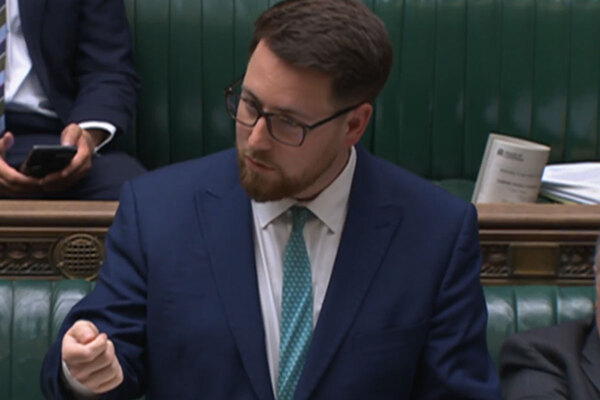You are viewing 1 of your 1 free articles
Julian Ashby is former chair of the RSH and current chair of Paradigm Housing
If the housing sector does not act on climate change we will be complicit
The housing sector cares about climate change but does not have a plan for moving towards net zero emissions. This must change, writes Julian Ashby
We may think of climate change denial as limited to eccentrics and extremists. But it is implicit in current housing policies.
Government has set a net zero emissions target by 2050 and this builds on the earlier target of 57% reduction from 1990 levels to be achieved by 2030 and 80% by 2050.
You would think that government would set a route map for each major carbon-emitting sector of the economy and establish policies for achieving the necessary reductions.
Transport produces the most emissions and the Department for Transport has set out its long-term strategy in the Road to Zero. Housing is the next largest emitter of carbon but there is little sign that the Ministry of Housing, Communities and Local Government has got out of the starting blocks.
According to provisional Office for National Statistics figures for 2018, housing contributes 65.9m tonnes of CO2 per year which is 18% of total UK emissions. 70% of homes are poorly insulated (EPC D or worse). But the earlier drive to improve thermal insulation stalled in the wake of austerity after 2012.
Between 2010 and 2012, more than 1 million homes per year had additional loft insulation installed. In the following five years there has been less than 1 million loft insulations altogether.
“A building programme of 300,000 homes a year using traditional methods would have a footprint of 15m tonnes of CO2”
But this is not just an issue that concerns existing stock. There is just as big a challenge in the construction of new homes.
Current building methods are very carbon intensive. Each new home ‘costs’ more than 50 tonnes of carbon to build. Steel is the worst culprit but bricks and concrete are major contributors.
So a building programme of 300,000 homes a year using traditional methods would have a footprint of 15m tonnes of CO2.
Some of this material is imported, but that should not absolve us from the overall impact.
Most new build homes in the UK do not meet the nearly-zero energy standard set out in the Energy Performance of Buildings Directive that comes into force at the start of 2021. This goes beyond thermal insulation into ‘smart readiness’.
There are bits of housing policy moving in the right direction. No new gas connections to the grid after 2025 has been announced but not enacted.
But the weakening of earlier policies on Zero Carbon Homes and the Code for Sustainable Homes and the removal of support for the Green Deal have been backward steps.
The core problem remains the low standard of the majority of housing stock. As the Committee on Climate Change reported earlier this year: “The 29 million existing homes across the UK must be made low carbon, low energy and resilient to a changing climate. This is a UK infrastructure priority and should be supported as such by HM Treasury.”
The committee also makes clear that retrofitting needs to consider these issues in the round including passive cooling measures, moisture and air quality control and water efficiency as well as thermal insulation.
Tackling this part of the problem requires a mixture of incentives and clear standards. There is a strong argument for Decent Homes 2 to include EPC D as a requirement to be achieved by 2025 and EPC C by 2030.
This should also apply to the wider private rented sector. A new version of the Green Deal should incentivise homeowners – perhaps paid for by higher rates of stamp duty or council tax on properties with the worst EPC grades.
In 2018, only 1% of new homes met the top EPC A standard. The 1.5 million homes planned between now and 2022 should be at or near to zero carbon with provision for low-carbon heat sources. This will not be achieved without enhanced building standards and more effective building control. There is a significant performance gap between design and implementation.
There also needs to be a significant shift to the use of timber – particularly in place of steel – as embedding carbon has a double impact. New homes should be adaptable for heat pump technology if not fitted initially.
“Brexit has distracted government from many domestic issues. But if the Department for Transport can do it for the transport sector, why can’t MHCLG for the housing sector?”
While the sector cares about climate change, it operates in a competitive market. Whether it is bidding for grant or for Section 106 or selling shared ownership or outright sale, it quickly becomes uncompetitive if it builds to higher standards than its peers or the private sector.
So there needs to be a level playing field principle underpinning the move towards the achievement of the housing sector’s ‘home to zero’.
The heavy lifting for the development of strategy towards a near zero carbon housing sector has been done by the Committee on Climate Change and others.
The required elements are known. What is needed now is the will to turn this into a clear strategy with targets, dates and policies consistent with the required outcomes.
Brexit has distracted government from many domestic issues. But if the Department of Transport can do it for the transport sector, why can’t MHCLG for the housing sector?
This is not to throw stones. Most of us are submitting 30-year projections to the regulator that largely ignore the likely costs of any policy that will achieve net zero emissions. So we are at least complicit.
Julian Ashby, chair, Paradigm and former chair, regulation committee, Homes and Communities Agency













